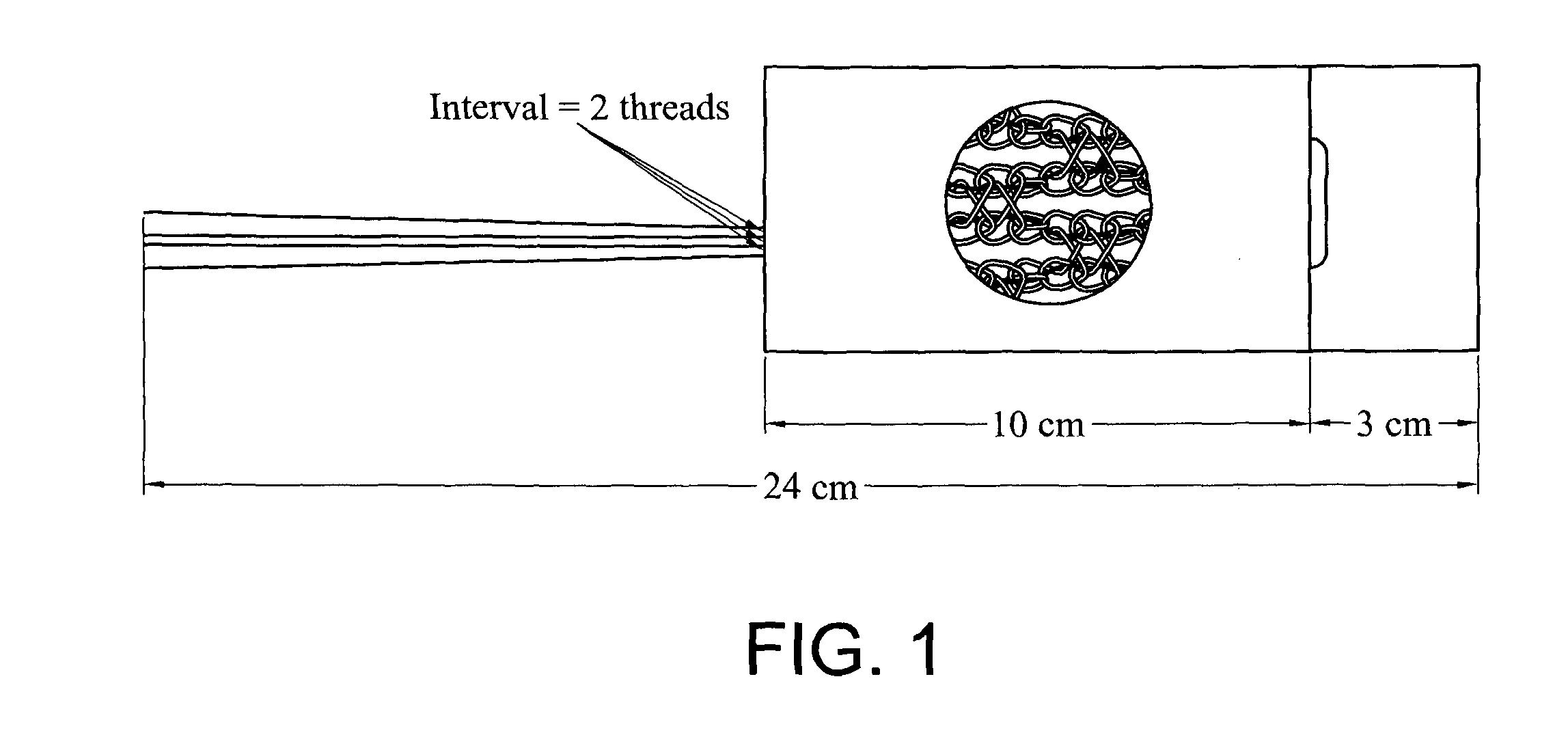Fusible bicomponent spandex
a bi-component, spandex technology, applied in the field of segmented polyurethane elastic fibers or spandex fibers, can solve the problems of heat resistance polyurethaneeurea spandex fibers having poor fusibility to nylon fibers, none of the previously provided solutions provide an elastomeric fiber, etc., to achieve the effect of resisting seam slippage, reducing the loss of recovery power, and adequate elasticity
- Summary
- Abstract
- Description
- Claims
- Application Information
AI Technical Summary
Benefits of technology
Problems solved by technology
Method used
Image
Examples
example 1
[0090]The polymer solution of the core component was prepared by making a polyurethaneurea in DMAc solvent with a two-step polymerization process, followed by mixing of a slurry of additives with the polymer solution. In the first step polymerization or prepolymerization, 100.00 parts of Terathane® 1800 glycol was reacted with 23.46 parts of Isonate® 125 MDR to form a prepolymer or a capped glycol with isocyanate terminal groups. The concentration of the isocyanate groups in the formed prepolymer was at 2.60% by weight of the prepolymer. The prepolymer was then dissolved in DMAc by high speed mixing to have a solution about 45% solids by weight. This diluted prepolymer was further reacted with a DMAc solution containing a mixture of ethylenediamine (EDA) and 2-methylpentanediamine with a molar ratio of 90 to 10 and N,N-diethylamine to form the polyurethaneurea polymer solution with about 35.0% solids by weight. The polyurethaneurea polymer had both primary amine termin...
example 2
[0095]The core component was the same as described in Example 1, the sheath polymer solution was prepared including the following:
Isocor ™ SVP-651 nylon terpolymer resin100.00 partsDesmopan ® 5733 TPU resin100.00 partsIrganox ® 245 2.67 partsN,N-Dimethylacetamide (DMAc)360.00 parts
[0096]The polymer solutions for the core component and the sheath component were metered and spun into a 20 denier 2 filament sheath-core bicomponent fiber. The strength and elastic properties as well as the fusibility to nylon fiber were measured.
example 3
[0097]The core component was the same as described in Example 1, the sheath polymer solution was prepared including the following:
VESTAMELT ® 742 Dried100.00 partsDesmopan ® 5733 TPU resin226.67 partsCellulose Acetate Butyrate (CAB-551-0.2) 10.50 partsLithium Chloride 6.67 partsN,N-Dimethylacetamide (DMAc)628.33 parts
[0098]The polymer solutions for the core component and the sheath component were metered and spun into a 20 denier 2 filament sheath-core bicomponent fiber. The strength and elastic properties as well as the fusibility to nylon fiber were measured as shown in Table 1.
TABLE 1Denier / TenacityElongationLoad PowerUnload PowerFusibility toFusedExampleItemFilamentg%at 200%, gat 200%, gSet %Nylon, gElongation %Fusing Conditions1270C1470 / 552.34708.101.9427.97.9091.3180° C. 60 seconds2270C2020 / 221.24163.130.6030.13.4596.0180° C. 60 seconds3270J2020 / 222.03873.640.5929.01.4752.0160° C. 60 secondsCom. Ex.70 / 5No Fusing at all180° C. 60 seconds
PUM
| Property | Measurement | Unit |
|---|---|---|
| melting temperature | aaaaa | aaaaa |
| temperature | aaaaa | aaaaa |
| temperature | aaaaa | aaaaa |
Abstract
Description
Claims
Application Information
 Login to View More
Login to View More - R&D
- Intellectual Property
- Life Sciences
- Materials
- Tech Scout
- Unparalleled Data Quality
- Higher Quality Content
- 60% Fewer Hallucinations
Browse by: Latest US Patents, China's latest patents, Technical Efficacy Thesaurus, Application Domain, Technology Topic, Popular Technical Reports.
© 2025 PatSnap. All rights reserved.Legal|Privacy policy|Modern Slavery Act Transparency Statement|Sitemap|About US| Contact US: help@patsnap.com


